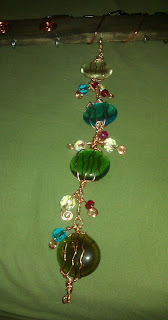A profile emerged with fifteen characteristics that applied to most eccentric persons, ranging from the obvious to the trivial. We found that an eccentric may be described in the following ways, more or less in descending order of frequency.
Gnomes On Dope (G.O.D.) ( Quoting from research by
Dr. David Weeks)
Characteristics of eccentric persons
- Nonconforming
- Creative
- Strongly motivated by curiosity
- Idealistic: wants to make the world a better place and the people in it happier
- Happily obsessed with one or more hobbyhorses (usually five or six)
- Aware from early childhood that he is different
- Intelligent
- Opinionated and outspoken, convinced that he is right and that the rest of the world is out of step
- Noncompetitive, not in need of reassurance or reinforcement from society
- Unusual in his eating habits and living arrangements
- Not particularly interested in the opinions or company of other people, except in order to persuade them to his – the correct – point of view
- Possessed of a mischievous sense of humor
- Single
- Usually the eldest or an only child
- Bad speller
The first five characteristics listed here are the most important and apply to virtually every eccentric. Nonconformity is, of course, the principal defining trait of the breed.
A profile emerged
with fifteen characteristics that applied to most eccentrics, ranging from the obvious to the trivial. We found that an eccentric may be described in the following ways, more or less in descending order of frequency. ( Quoting from research by Dr. David Weeks)
Less likely to be addicted to consumer culture than the general population.
Very unlikely to be substance abusers or alcoholics. Dr. David Weeks “fewer than 30 of the more than 1,000 eccentrics he sampled had been substance abusers or alcoholics.”
Nonconformity, extreme curiosity and irreverence for the strictures of culture continually resurface as the most distinguishable eccentric traits , and these are indeed qualities that most of us consider admirable.
- They’re permanently non-conforming from a very early age, and there’s a great overlap between eccentric children and gifted children. They develop differently, though.
- The eccentrics become very, very creative but they’re motivated primarily by curiosity. They have extreme degrees of curiosity, and they’re very independent-minded.
- Their other motivation is fairly idealistic. They want to make the world a better place, and they want to make other people happy.
- They have these happy obsessive preoccupations, and a wonderful, unusual sense of humor, and this gives them a significant meaning in life. And they are far healthier than most people because of that.
- They have very low stress. They’re not worried about conforming to the rest of society, low stress, high happiness equates with psychological health.
- They use their solitude very constructively, and physical health, because of that.
- They only visit their doctors perhaps once every eight or nine years, which is about twenty times less than most of us do. (David Weeks)
- “Time and again, the eccentrics in our study clearly evinced that shining sense of positivism and buoyant self-confidence that comes from being comfortable in one’s own skin.” Dr. David Weeks.
The ongoing creativity of the eccentric is far more enduring and permanent and they draw from their inner wealth of experience, and actually it’s the people who are eccentric who have the most vivid dreams who turn out to be the most original thinkers, and they’re the only people in the world that I know of who have both vivid dreams at night, when they’re asleep, and also a vivid visual imagination by day.
One of the most common misconceptions about eccentricity is that it is a mild form of madness-in other words, that eccentric behavior is a symptom of mental illness.
Especially great care must be taken to distinguish between eccentricity and neurosis, lest we commit the error the authors of that psychiatric textbook warned us against. While it is true that the behavior of neurotics is also aberrant, there is an enormous qualitative difference between the two. Neurotics are repetitively dysphoric: they suffer from panic attacks, phobias, and high anxiety levels on account of their differentness, and therefore they want to be cured. Neurosis is often thrust upon the sufferer from the outside; it is an unwanted difficulty in life.
Eccentricity, on the other hand, is taken on at least partly by free choice, and is something positive and pleasurable to the individual. Simply put, neurotics are miserable because they think they’re not as good as everyone else, while eccentrics know they’re different and glory in it. An eccentric knows he is right and, far from wanting to change his ways, is likely to wish to convert everyone else to his way of thinking.
An even more essential distinction needs to be drawn between eccentricity and psychosis, though it may sometimes seem a blurry one to the lay observer. One common trait of eccentrics is that they often experience mental images that are more vivid than those of normal people. Some extreme eccentrics have visions, which is a not uncommon symptom of schizophrenia. The important distinction is that the schizophrenic has no control over his visions and the voices he hears: they intrude themselves upon him forcibly and give rise to a terrifying sensation of powerlessness.
The eccentric, on the other hand, is likely to find his visions a source of delight, and he has much more control over them. The psychotic state severely disrupts thought processes, leaving the person dysfunctional, whereas the brain of an eccentric usually functions perfectly well-it just does so in peculiar and largely unknown (but not unknowable) ways.
Eccentricity can also mimic certain personality disorders, as illustrated by two examples.
First, in cases of hysterical personality disorder the patient sometimes behaves flamboyantly, drawing attention to himself in public in extravagant, histrionic ways.
Second, a person with a schizoid personality prefers to be on his own, showing an extreme aversion to groups, a tendency that usually results in a remarkable concentration on strange, obsessive hobbies. The traits of both these disorders may be detected in the behavior of some eccentrics. While many eccentrics are known for their flamboyant public personalities (
Emperor Norton) being one excellent example) and others have obsessive hobbies, the same fundamental distinction must be made: the person suffering from the personality disorder is dysfunctional and ordinarily has little choice in the matter, while for the eccentric it is a positive, pleasurable experience.
A schizoid person and an eccentric might both become obsessive butterfly collectors, say, but whereas the schizoid will do anything to satisfy the compulsion to collect, and may feel threatened on all sides by impediments to his collecting, for the eccentric it will be a source of delight, an avocation to which he freely devotes time and energy. The one is reactive, bringing stress to himself and to others; the other is creative and joyful.
We should emphasize at the outset that even though eccentricity is not a form of mental illness, eccentric people have no special immunity from diseases of the mind. Just as you would expect in any large group of people, regardless of how it was chosen, some of the subjects in the study suffered from mental illnesses. Yet we found by administering standard diagnostic tests that eccentric persons actually have a higher general level of mental health than the population at large. Original thinking, it seems, may be better for you than dull conformity.
We love eccentric people , and yet we are profoundly ambivalent about them. Our collective imagination is piqued by the bizarre behavior of someone like Howard Hughes, the richest man in the world (or close enough), who lived the last days of his life like a mystical hermit. We are fascinated by them, yet we may also be simultaneously repelled and threatened.
Eccentric persons have thrown off the constraints of normal life to let themselves do exactly as they please-and anyone who doesn’t like it be damned. The rest of us are vaguely unsettled by that degree of freedom. Why should we continue to groom ourselves properly and comport ourselves according to social convention, while those who flout convention seem to be having the time of their life, and also, in many cases, enjoying perfect health and great personal and professional success?
That ambiguity reflects society’s ambivalence toward anyone who is different. Most of us have made peace with people who are of a different race or religion, with homosexuals, with the very short or very fat, but it is an uneasy peace, whether or not we admit it. There is something deep inside that yearns to be reassured that we are “right,” and those who are fundamentally different threaten that inner conservative streak.
Eccentric persons are especially troubling to us because they cannot be easily pigeonholed, and often pass unnoticed among the rest of us, for while some eccentrics proclaim their differences by bizarre dress and grooming, most do not.
Yet it is precisely that serendipitous aspect of eccentricity that delights us. We love the idea of encountering the outlandish and whimsical in our lives, even though we may fear to find it in ourselves.
Creativity is at the heart of eccentricity.
One of the principal reasons eccentric persons continually challenge the established order is because they want to experiment, to try out new ways of doing things. That quality is most conspicuous in artists and scientists, who are significantly more likely to be eccentric than the rest of us. The study included seventy five artists, whose lives are, obviously, devoted to creative activity, as well as many inventors, who use their brainpower to bring into existence entirely new and presumably useful machines. But some of our eccentric persons were driven, it seems, not by traditional aesthetic or scientific impulses but rather by a powerful need to create in its purest, generalized form.
Closely allied to creativity is the eccentric persons intense curiosity. Most eccentric people told us that they first became aware that they were different from everyone else when they were children, because they were constantly searching for underlying answers. When they asked their parents “Why?” they were never content with “Just because,” and even less happy with “Because I said so.”
Curiosity is the only human motivation that is primarily intellectual; some psychologists call it the intrinsic motivation, because the process of discovery is its own reward. All of us are curious about some things, perhaps intensely curious, but if it becomes too difficult to find the answer, our interest will gradually fade.
For the eccentric, however, finding out the answer becomes an obsession. The nineteenth-century British naturalist
Charles Waterton, while conducting research in the South American rain forest, spent several months sleeping with a foot dangling out of his hammock, in the hope of experiencing the bite of a vampire bat. He was, he said, “frightfully disappointed” to be left untouched by “the provoking brutes.” Waterton has also been plausibly described as the first man to wear a crew cut.
an eccentric observation
“Psychiatrists and pharmaceutical companies, as well as the insurance industry, have a vested interest in diagnosis and treatment. There’s a whole corporate system that propels people into treatment and rewards those who think in terms of treatment paradigms for individuals where the actual problem is not in the individual, necessarily, but in the culture itself.”
“If a man does not keep pace with his companions, perhaps it is because he hears a different drummer. Let him step to the music which he hears.”
Thoreau
“Being eccentric helps to cope with an insane the world” ~Hardly Himself












